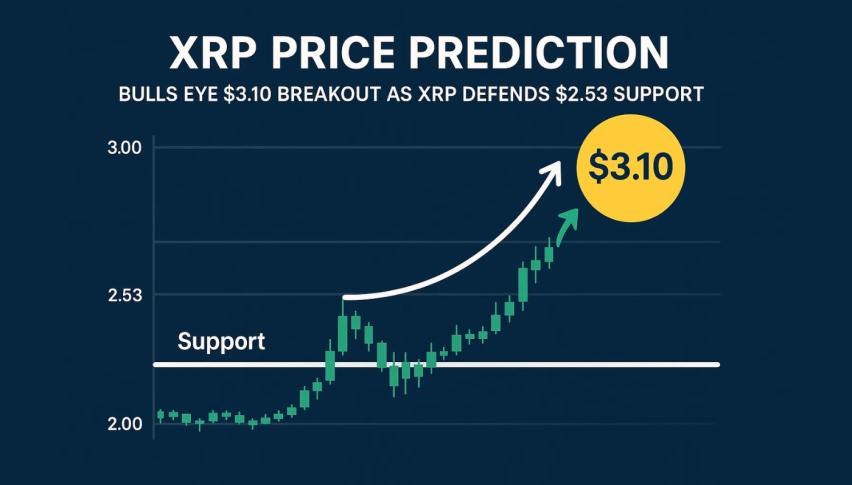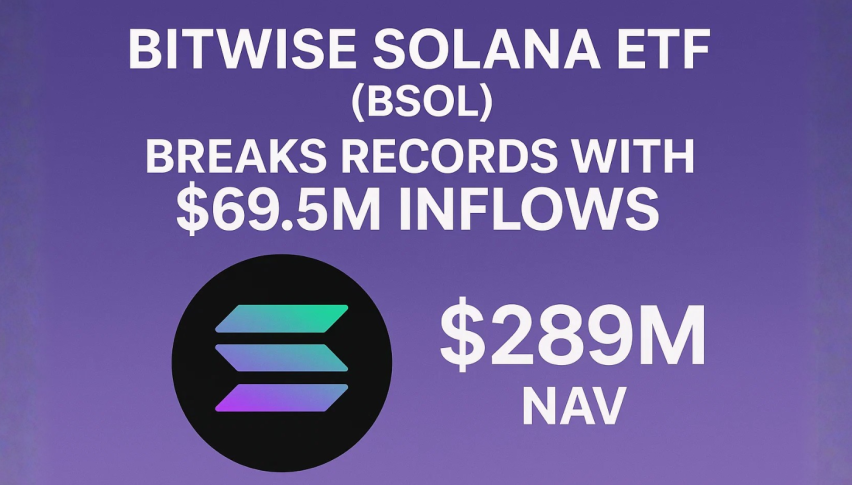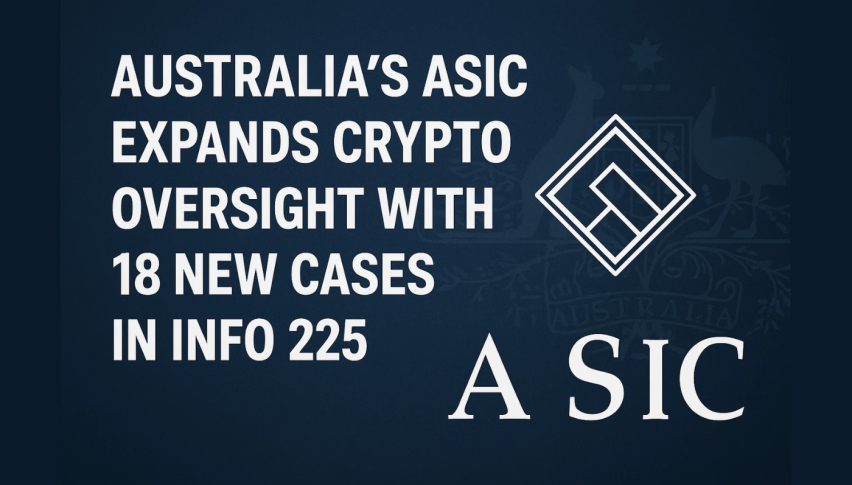Daily Crypto Signals: Bitcoin Tests $116K Resistance, Solana Staking ETF Records Strongest Debut
Bitcoin continues its recovery from October's historic sell-off, gaining 13% but facing stubborn resistance at $116,000 as traders await Wed
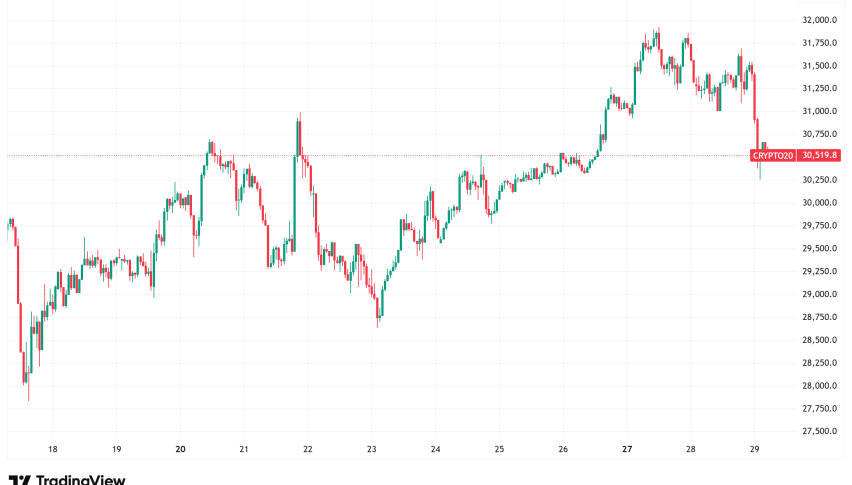
Quick overview
- Bitcoin has recovered 13% from October's sell-off but faces resistance at $116,000 as traders await key economic events.
- Bitwise's Solana staking ETF launched with $55.4 million in trading volume, marking a strong debut for crypto ETFs in 2025.
- Circle's Arc blockchain testnet has attracted participation from major financial institutions, indicating growing institutional interest in digital assets.
- Political tensions surrounding cryptocurrency trading are rising, highlighted by a bill aimed at preventing conflicts of interest among lawmakers.
Bitcoin BTC/USD continues its recovery from October’s historic sell-off, gaining 13% but facing stubborn resistance at $116,000 as traders await Wednesday’s Federal Reserve interest rate decision and Thursday’s critical US-China trade summit. Meanwhile, Bitwise’s Solana SOL/USD staking ETF launched with $55.4 million in first-day trading volume, marking the strongest crypto ETF debut of 2025, while major institutional players including BlackRock and Goldman Sachs joined Circle’s Arc blockchain testnet.
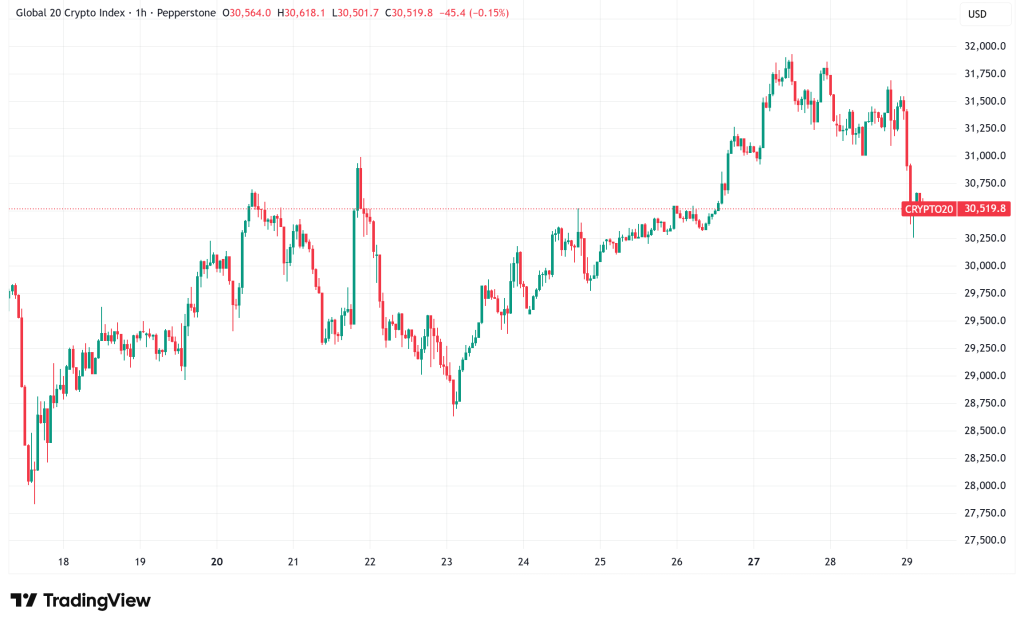
Crypto Market Developments
This week, the cryptocurrency market saw a lot of institutional activity as traditional finance and digital assets became more closely linked. Circle, the second-largest issuer of stablecoins in the world, unveiled the public testnet for Arc, the open layer-1 blockchain network that aims to bring global financial infrastructure onchain. More than 100 significant organizations from banking, financial markets, and fintech took part in the rollout. These included BlackRock, Goldman Sachs, Visa, Mastercard, State Street, Apollo, BNY Mellon, Intercontinental Exchange, and Deutsche Bank.
Jeremy Allaire, the CEO of Circle, talked about the momentum, saying that the companies involved “reach billions of users, move, exchange, and keep hundreds of trillions of dollars in assets and payments.” The Arc network wants to offer fixed US dollar-based costs, finality in less than a second, and customizable privacy settings. It will also work directly with Circle’s USDC stablecoin and payment system.
According to people who know about the situation, Polymarket, a prediction platform, is getting ready to start trading again in the US within a few weeks. Before the end of November, the site expects to let US residents make a small number of deals, with a focus on sports betting. This news comes almost two months after the US Commodity Futures Trading Commission sent a no-action letter to a crypto derivatives exchange and clearinghouse that Polymarket bought.
Political tensions around trading cryptocurrencies grew when US Representative Ro Khanna submitted a bill that would stop President Donald Trump, his family, and members of Congress from trading equities or cryptocurrencies. The Democratic representative was worried about possible conflicts of interest with Trump’s son’s crypto business, World Liberty Financial. He used the recent pardon of Binance co-founder Changpeng Zhao as proof of “blatant corruption.”
Bitcoin Trades in a Range Between $110,000 and $116,000
Since the sell-off caused by liquidation on October 10, the price of Bitcoin has shown strength, rising 13% but hitting resistance at the $116,000 level several times. Technical analysis shows that daily closes over $116,000 are needed to confirm a bullish trend reversal, but sellers have always stopped intraday breakouts above this level.
Order book data from several exchanges shows that there are strong resistance levels. For example, there is a wall of asks at $116,000 on Coinbase spot markets and between $117,000 and $118,000 on Binance perpetual futures. In the last 12 hours, short liquidations added up to $49.83 million as futures traders canceled their ask orders in case the market started to move up. Even though it’s hard to break past barrier, there are some good signs. For example, global exchange open interest has gone up from $28.11 billion on October 11 to $31.48 billion now, even though it’s still below the $40.39 billion observed when Bitcoin was worth $124,600.
Spot Bitcoin ETF inflows have been going up, with $260.23 million in net flows over the last three trading sessions and a big $477 million inflow on October 21, just days after BTC dropped below $108,000. Market data shows that institutional and retail investors behave very differently when they trade. For example, larger order-size investors (1 million to 10 million) keep selling rallies, while smaller order-size investors (1,000 to 10,000) have been buying dips and facing liquidations in futures markets.
There are two important things happening this week that will likely affect the price of Bitcoin in the short term. The Federal Open Market Committee meeting on Wednesday, when the Federal Reserve is likely to lower its benchmark rate by 25 basis points, might cause the usual changes in positioning in the crypto markets. More importantly, the meeting between President Donald Trump and Chinese President Xi Jinping on Thursday is quite risky. If the talks break down or a bad trade deal is reached, it could have bad effects on both the stock market and the cryptocurrency market. Bitcoin’s price will probably keep fluctuating between $116,000 and $110,000 until these things are worked out.
Solana Staking ETF Launch Signals Growing Institutional Interest
On Tuesday, Bitwise’s Solana staking ETF had a great opening day, with $55.4 million in trading volume. This was the greatest amount for any crypto ETF that began in 2025. The product, which trades under the ticker BSOL, did better than expected before it launched, bringing in about $223 million in assets. This shows that institutions are getting more involved and that people are becoming more confident in staking mechanisms that reward investors for locking up cryptocurrency to validate blockchain transactions.
Eric Balchunas, an analyst for Bloomberg ETFs, said that BSOL’s launch did better than REX Osprey’s prior XRP and Solana staking ETFs. This shows that Wall Street is becoming more interested in cryptocurrencies outside than Bitcoin and Ethereum. The launch happened at the same time as the first trades in Canary Capital’s HBAR ETF, which had a trading volume of $8 million, and its Litecoin ETF, which had a trading volume of $1 million, which was less than expected.
BSOL’s introduction is a big deal for Solana-based investment products, but its trading volume was only a small part of the $1.08 billion that the nine spot Ether ETFs that started in July 2024 saw. The historic debut brought in $248.7 million for BlackRock’s iShares Ethereum Trust ETF, whereas Grayscale’s converted Ethereum ETF Trust witnessed $458 million in outflows.
The successful debut of Solana staking ETFs is a big step forward for cryptocurrency investment products. Asset managers are now looking for exchange-traded products that are linked to risky cryptocurrencies and have new features like staking rewards. This trend shows that institutions are becoming more sophisticated and open to working with a wider range of blockchain ecosystems beyond the well-known Bitcoin and Ethereum marketplaces.
- Check out our free forex signals
- Follow the top economic events on FX Leaders economic calendar
- Trade better, discover more Forex Trading Strategies
- Open a FREE Trading Account
